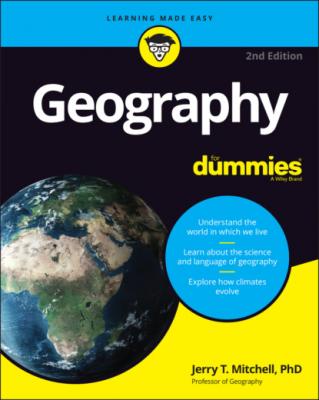Geography For Dummies. Jerry T. Mitchell
Читать онлайн.| Название | Geography For Dummies |
|---|---|
| Автор произведения | Jerry T. Mitchell |
| Жанр | География |
| Серия | |
| Издательство | География |
| Год выпуска | 0 |
| isbn | 9781119867142 |
(© naschy / Adobe Stock)
FIGURE 5-8: Geographic Information Systems (GIS) use layers of locational and attribute data about places for analysis and decision-making.
Most of you have probably not used a GIS, but you’ve come close. Whenever you use an online mapping service to find your way between two cities, you’ve had a simple GIS-like product at your fingertips. There’s a base map, there’s data — say restaurants or hotels — and you have the ability to “query.” Encoded into that map is not just locations but whether a street is one-way or not, and so on. As a result, your query about directions results in a selection of best paths for you to take, usually based on distance or time.
Global Positioning Systems
Few things are more important in cartography than the positional accuracy of mapped objects. Historically, this was accomplished by field observation. That is, explorers or surveyors would travel to a particular area, observe locally important features, and map their locations. Nowadays, GPS (global positioning system) technology has greatly contributed to positional accuracy. Think about exactly how accurate our spatial data needs to be for self-driving cars to work!
While you may think of GPS as the nice voice that gives you directions in your car, have you ever thought about the system that makes it all happen? The United States has launched a series of satellites (31 operational at the time of writing) that talk to a GPS receiver, often now in your smart phone. The United States is not alone here. Russia, China, India, Japan, and the European Union all have systems, so geographers are now likely to refer to a Global Navigation Satellite System to encompass it all.
Using trilateration — or measuring distances — the receiver and satellite bounce signals between each other and record the time the signal takes to be read. With three satellites doing the same thing, we can accurately locate you on Earth by putting you in the middle of a satellite Venn diagram. Add a fourth satellite and we can determine your elevation.
Remote sensing
Getting information remotely is the game, here. In other words, someone — or rather, something — is doing the work for you. In remote sensing we are talking about gathering information at a distance, and mainly about Earth from above. This might be aerial photography from a balloon all the way to infrared imagery from a satellite hundreds of miles above you, and much of this information now makes up the base maps used in a GIS.
Numerous satellites monitor and provide map-ready information about Earth’s surface and atmosphere. Virtually all of them utilize non-photographic scanners that produce thermal, infrared, or radar imagery. This information is processed and assembled into photo-like images. But we also use digital photography taken by aircraft or drone, and each type of sensor has special advantages.
Aerial photography
Aerial photography refers to photos of Earth’s surface taken from aircraft. Today many maps produced under government approval at all levels, municipal through federal, are directly derived from aerial photography. Black and white film was a widely used medium historically, but today almost all of this is done with digital cameras.
Infrared photography is also very popular. Infrared energy is contained in the sunlight that strikes Earth and reflects off its surface. You and I can’t see it, but special types of sensors can. Infrared energy readily passes through haze and air pollution, resulting in crisp images even on days when the atmosphere is far from clean.
Because of that very desirable characteristic, infrared photography is widely used in aerial surveys.
Non-photographic imagery
Radar imaging: In radar imaging, a sensor emits continuous beams of energy that bounce off Earth and return to the sensor, which records them. Because the emitted beams travel at a known and uniform speed, the time that it takes them to make the round trip is a function of the elevations of the locations where the beams reflect. For example, a beam that bounces off a mountaintop takes less time to return to the sensor than one that reflects off a valley bottom. This information can be used to produce detailed images of terrain and very exact topographic maps.Radar beams can penetrate clouds and fog with no loss of strength. Thus, radar imaging is extremely useful for monitoring and mapping Earth’s surface in regions where atmospheric characteristics inhibit aerial photography (such as characteristically cloudy equatorial areas). It may also be used at night to the same effect as day. The same, of course, cannot be said of regular film.
Thermal imaging: Thermal scanners
